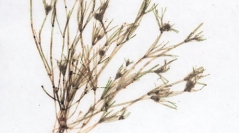

 Cryptogamie, Algologie
31 (4) - Pages 529-555
Cryptogamie, Algologie
31 (4) - Pages 529-555The development of DNA barcodes for green algae would aid in their accurate and rapid identification. This is particularly important for the green algae because in many species structural characters are few or difficult to observe. In this study we test the utility of several DNA barcode loci in seven distantly related species groups of freshwater charophytes and chlorophytes. The ITS rDNA and COI markers were the most variable, although COI was least applicable because it was successfully amplified and sequenced in only one test genus. The ITS1 and ITS2 rDNA regions each successfully amplified in only a subset of the charophytes. Both rbcL and tufA were moderately variable, although tufA may pose challenges in some lineages where the gene is encoded in the nucleus. The 18S rDNA and UPA were the least variable loci tested. Of the markers tested, rbcL, ITS2 and tufA (in chlorophytes) are the most promising for use as DNA barcodes. However, none of the loci tested were ideal for use across all tested lineages of green algae because of taxon-specific applicability, because none of the markers could distinguish closely related species in all groups tested, and because of overlap in the level of intraspecific and interspecific variation.
Also available on Connect.barcodeoflife